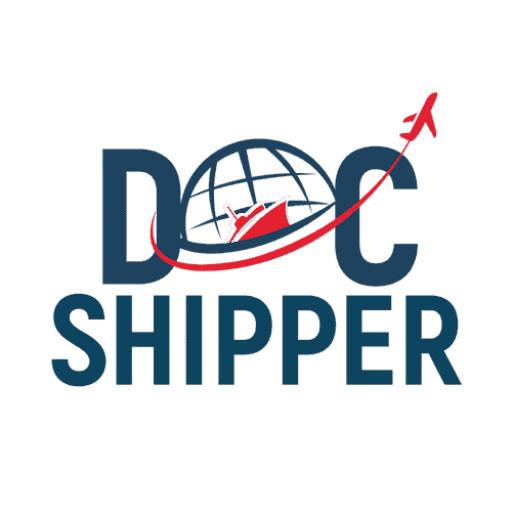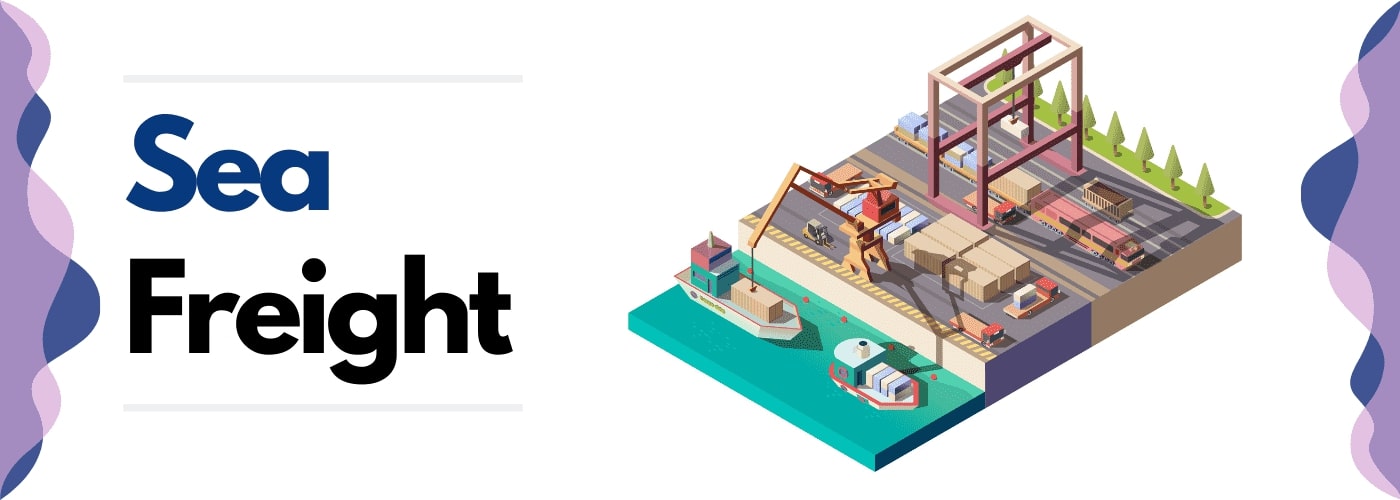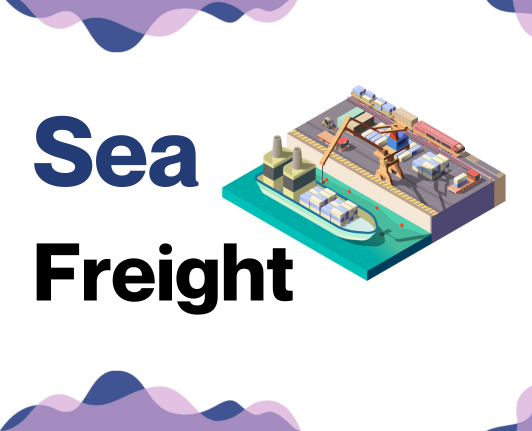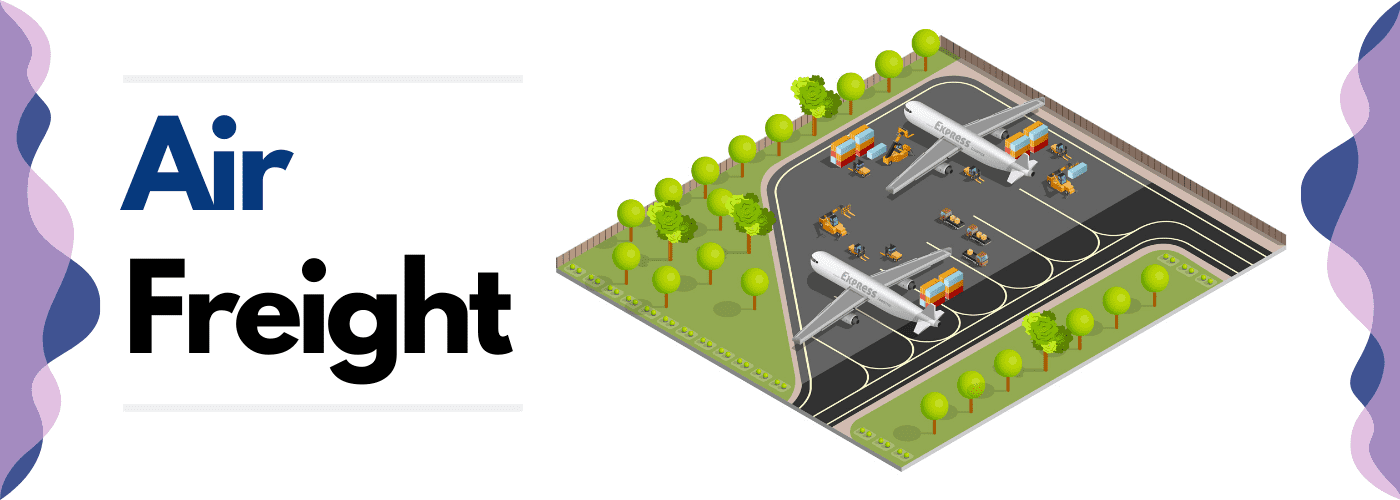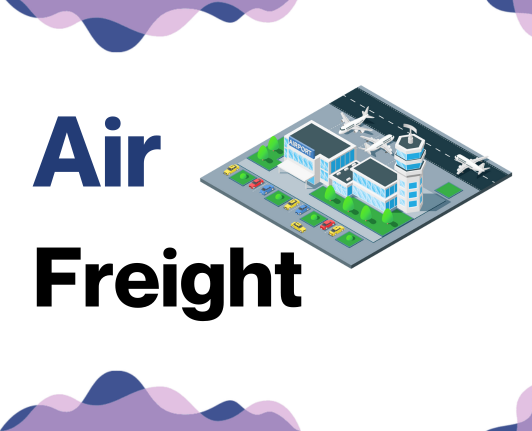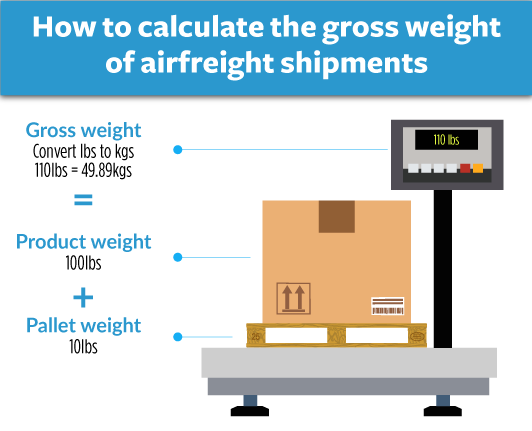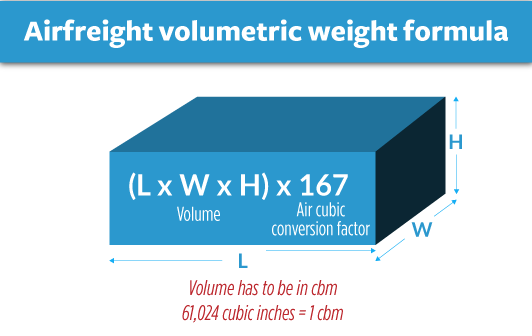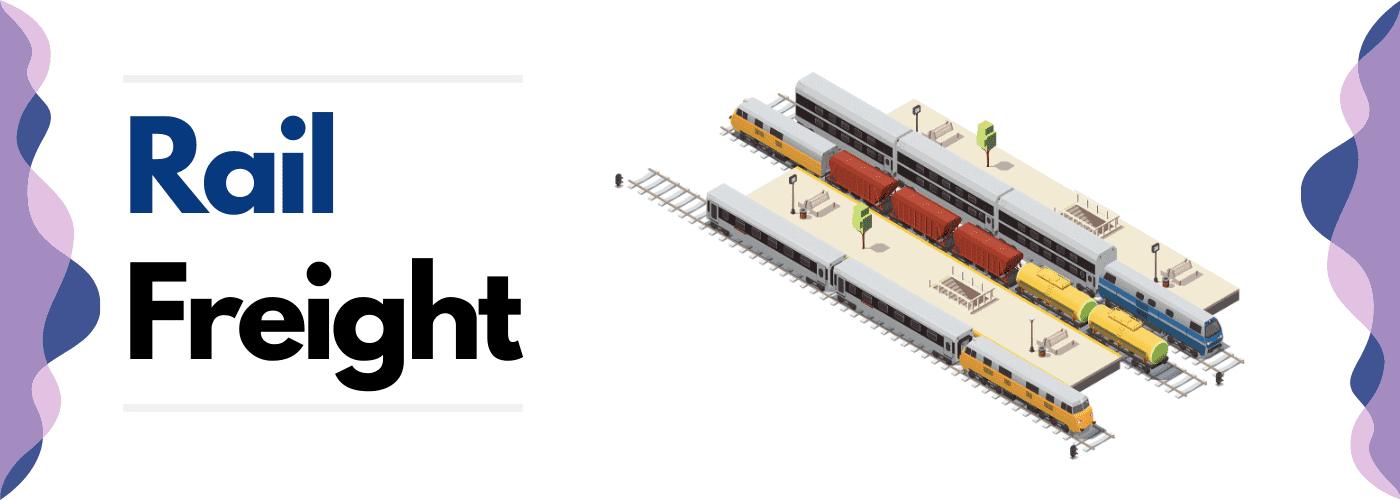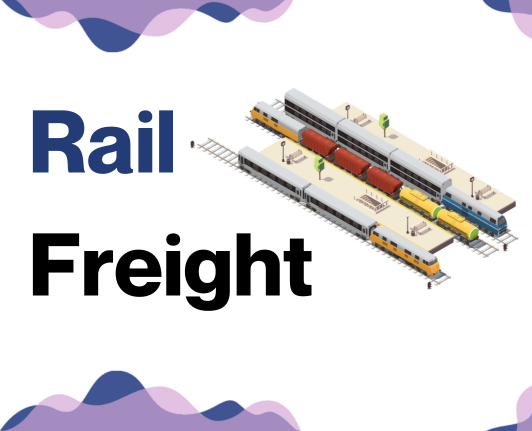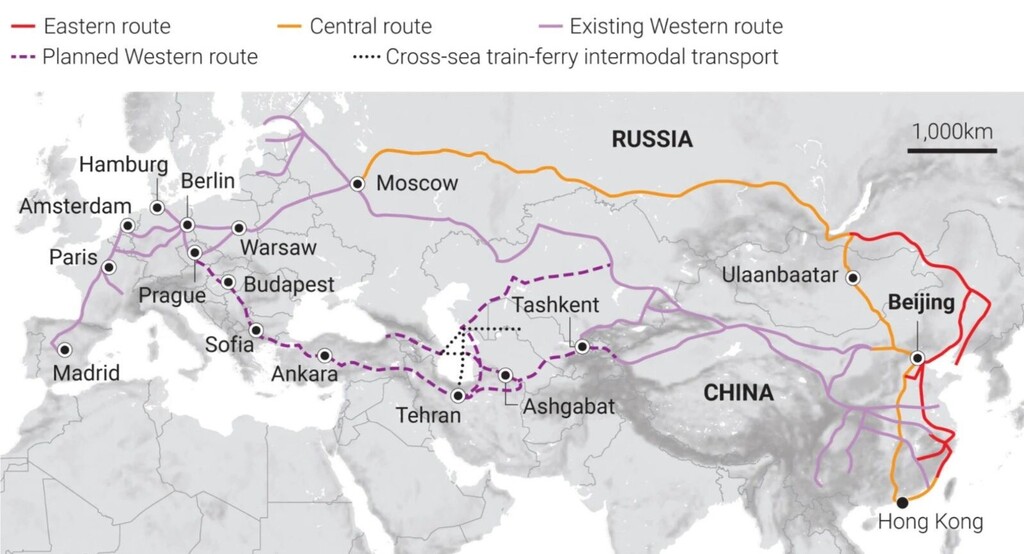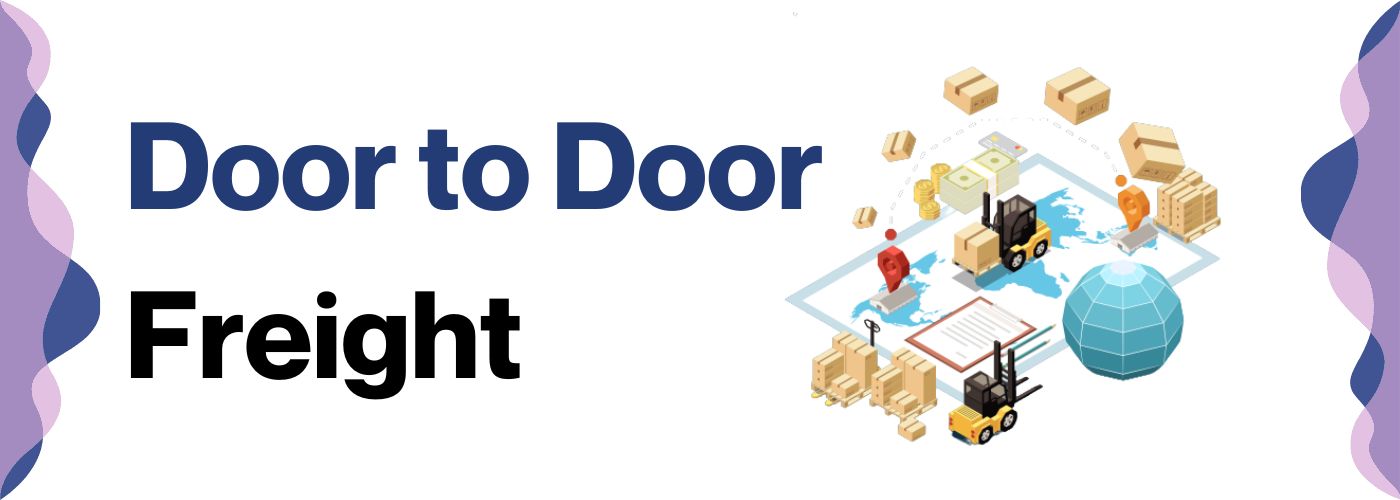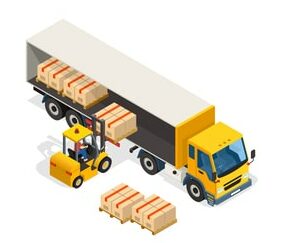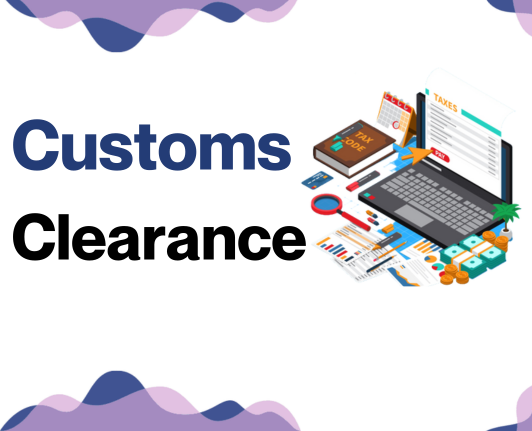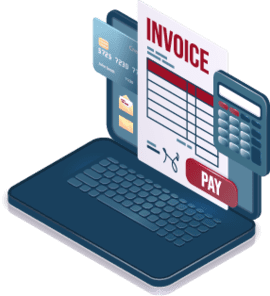Did you hear about the frugal shipper who sent his goods from China to Norway via carrier pigeon?
Well, before you resort to training your own bird flock, we’re here to address your big concerns - understanding shipping rates, dissecting transit times, and deciphering tricky customs regulations.
Our guide gives you a robust and thorough understanding of the intricacies of freight transportation between China and Norway. We'll provide you with a deep-dive analysis into various shipping options, explain the ins and outs of customs clearance, break down charges like duties and taxes, and proffer valuable advice tailored to your specific business needs.
If the process still feels overwhelming, let DocShipper handle it for you! As an international freight forwarder, we convert challenges into success stories one shipment at a time, guiding your goods smoothly through every step of the journey.
Which are the different modes of transportation between China and Norway?
Crossing borders, mountains, seas, and time zones, shipping goods from China to Norway is no small feat. Imagine this journey as a complex marathon race. The fastest route may not always be the best route. Like a marathon runner choosing smooth pavement over rocky trails, you must reflect on your unique shipping needs and challenges. Is it heavy machinery or fragile glassware? While air transport screams speed, sea freight might be your steady tortoise beating the more expensive hare. This guide aims to shed light on the key factors that determine your best transport option and aid in winning your shipping marathon.
How can DocShipper help?
Shipping goods from China to Norway? Not a problem! At DocShipper, we offer smooth, streamlined transport solutions. Our expert team navigates customs for you, handles administrative tasks, and finds the most efficient routes for your cargo across air, sea, road, or rail. Have a query or need a free estimate? Reach out to our consultants today!
DocShipper Tip: Sea freight might be the best solution for you if:
- You are shipping large volumes or bulky items, as sea freight offers the most space at a cost-effective rate.
- Your cargo doesn't have an urgent deadline, as sea freight typically has longer transit times compared to air or rail.
- Your shipping routes are between major ports, allowing you to leverage the extensive global network of sea shipping lanes.
Sea freight between China and Norway
When it comes to global commerce, China and Norway share a dynamic maritime alliance. As multiple cargo ports like Shanghai and Oslo act as the economic pulse of these nations, ocean shipping takes center stage. While it may not win any speed trials, sea freight offers a wallet-friendly option for shipping high-volume goods across these vast distances.
However, the sea isn't always smooth sailing. Businesses often encounter choppy waters while navigating the complexities of shipping between these countries. Like assembling a puzzle, every consignment has unique specifications and rules. Mistakes? They're quite common, but not inevitable. Freight forwarding doesn't have to feel like solving a Rubik's cube. Through a blend of best practices and industry tricks of the trade, the process can be streamlined. Stay tuned as we cast light on these helpful tips and practices that simplify the journey from the bustling ports of China to the calm Norwegian fjords.
Main shipping ports in China
Port of Shanghai
Location and Volume: Nestled at the mouth of the Yangtze River, the Port of Shanghai is a pivotal hub for international trade, boasting an annual shipping volume of 43.3 million TEU, making it the busiest port in the world.
Key Trading Partners and Strategic Importance: Key trading partners include the U.S., South Korea, Japan, and European Union countries. The port’s strategic importance lies in its leading global position and efficient integration with river transportation, allowing goods to penetrate deep into China's interior.
Context for Businesses: If you're looking to reach markets within China or neighboring Asian countries, the Port of Shanghai’s extensive connectivity and high volume could be a central facet of your shipping plan.
Port of Shenzhen
Location and Volume: Positioned in Guangdong Province, the Port of Shenzhen offers access to the Pearl River Delta and supplies over 27.7 million TEU annually.
Key Trading Partners and Strategic Importance: Key trading partners include the USA, Hong Kong and ASEAN countries, the Port of Shenzhen facilitates an integral stretch of the global trade route.
Context for Businesses: If you’re considering tapping into Southeastern markets or seeking vibrant manufacturing sectors, the Port of Shenzhen might be a perfect match for your requirements.
Port of Ningbo-Zhoushan
Location and Volume: The Port of Ningbo-Zhoushan is located in Zhejiang province. It is the world's top port in terms of tonnage, with a capacity of over 26 million TEU.
Key Trading Partners and Strategic Importance: Key partners include the United States, Australia, and Southeast Asian countries. Its strategic importance lies in its top-rated handling of crude oil, iron ore, and coal.
Context for Businesses: If your company deals with raw material exports such as oil and coal, the Port of Ningbo-Zhoushan provides a robust terminal capable of handling colossal volumes.
Port of Hong Kong
Location and Volume: Set in the South China Sea, the Port of Hong Kong oversees around 19 million TEU annually.
Key Trading Partners and Strategic Importance: It predominantly manages trade with the United States, Singapore, and Taiwan. The port is known for its role as a major re-export hub.
Context for Businesses: If you’re interested in leveraging the re-export market and reaching Southeast Asian countries, the Port of Hong Kong could benefit your shipping strategy.
Port of Guangzhou
Location and Volume: Situated on the Pearl River Delta, the Port of Guangzhou handles around 14 million TEU per year.
Key Trading Partners and Strategic Importance: Its primary trading partners include Australia, Southeast Asia, and the USA. As the main seaport for the Guangdong province, its strategic value lies in serving as a comprehensive gateway for importers and exporters.
Context for Businesses: If expanding your operations to the Southern provinces or seeking partners in the Pearl River Delta region is on your agenda, the Port of Guangzhou could be a critical component of your logistics plan.
Port of Qingdao
Location and Volume: Located in Shandong Province, the Port of Qingdao services approximately 19.3 million TEU annually.
Key Trading Partners and Strategic Importance: Predominantly dealing with the United States, Japan, and South Korea, Qingdao's strategic importance is its strong capabilities to service both bulk cargo and container shipping.
Context for Businesses: If your export or import needs involve varying types of shipping, the Port of Qingdao's flexibility in handling different kinds of cargo is worth considering.
Main shipping ports in Norway
Port of Oslo
Location and Volume: Located in the heart of Norway's capital city, Oslo, this port is essential for trade in the Scandinavian region, boasting a shipping volume of around 1.5 million TEU annually.
Key Trading Partners and Strategic Importance: The Port of Oslo enjoys strong trading bonds with countries such as Germany, Netherlands, UK, and other EU nations. It's the largest cargo transfer port in Norway and plays a pivotal role in domestic and international trade.
Context for Businesses: If you're looking to foster trade ties with Scandinavian and Northern European markets, the Port of Oslo could play a crucial role in your shipping strategies, thanks to its strategic location and excellent connectivity to the rest of Europe.
Port of Bergen
Location and Volume: The Port of Bergen, situated on the west coast of Norway, serves as the gateway to the world's largest off-shore oil fields. It handles about 60,000 TEU of containerized cargo annually.
Key Trading Partners and Strategic Importance: It primarily fosters trade with North Sea countries, especially the UK and Netherlands. With the booming oil industry, its strategic importance in transporting oil and petrochemical products cannot be overstated.
Context for Businesses: Businesses engaged in energy, oil, or petrochemical industries may find the Port of Bergen highly relevant due to its proximity to the major oil fields.
Port of Drammen
Location and Volume: Nestled in the bustling industrial city of Drammen, this cosmopolitan port deals with around 20,000 TEU annually, making it a small but significant player in Norway's maritime industry.
Key Trading Partners and Strategic Importance: Trading primarily with European nations, the Port of Drammen often serves as a key point of import for vehicles into Norway.
Context for Businesses: If you are into automobile trading, especially within Europe, the Port of Drammen presents itself as a practical hub for vehicle imports.
Narvik Port
Location and Volume: Located well above the Arctic Circle, Narvik Port handles approximately 18 million tons of cargo, making it the largest bulk commodity port within the Arctic Circle.
Key Trading Partners and Strategic Importance: Its primary trading partners include Scandinavia, Western European, Baltic, and North American countries. The port is particularly significant for bulk goods such as iron ore, a majority of which is exported to Europe.
Context for Businesses: If your business involves bulk commodity trading, particularly in iron ore, Narvik Port should figure prominently in your logistical planning.
Port of Ålesund
Location and Volume: Positioned west of Norway, Ålesund handles a moderate shipping volume but is famous for fish-related products, particularly dried cod.
Key Trading Partners and Strategic Importance: Trading mainly with European partners, Ålesund is archly significant for the fish and seafood industry.
Context for Businesses: Businesses involved in the seafood or fishery sector may find the Port of Ålesund a crucial element in their export strategy due to its specialization in fish and seafood trading.
Port of Stavanger
Location and Volume: Based on the southwestern coast of Norway, Stavanger is an essential port, specifically for energy-related cargo shipments, and manages a decent shipping volume for its size.
Key Trading Partners and Strategic Importance: Stavanger is a prominent trading partner with North Sea countries and plays a pivotal role in the transportation of goods related to the energy and oil sector.
Context for Businesses: If you operate within energy or oil sectors, the Port of Stavanger’s strategic positioning in the North Sea, with direct access to the world’s largest offshore oil fields, might make it a potentially advantageous hub for your logistics.
Should I choose FCL or LCL when shipping between China and Norway?
When shipping goods between China and Norway, determining whether to use Full Container Load (FCL) or Less than Container Load (LCL) - also known as consolidation - could be the secret to optimizing your logistics. This choice can significantly impact your cost, delivery time, and overall shipping success. We're here to explore the intricacies of these two sea freight options, helping you better understand their differences and guiding you to make a judgement call that best fits your specific needs. Ready to dive in? Your strategic shipping decision starts here.
LCL: Less than Container Load
Definition: LCL, or Less than Container Load, is a type of shipment method where your cargo doesn't fill a whole container and is consolidated with other shippers' goods to make up a full container load.
When to Use: This service is especially practical when your cargo volume is less than 13-15 CBM (Cubic Meters). It offers flexibility for low-volume shipping, providing cost-efficiency without the need to wait until you have enough goods for a full container.
Example: Imagine you're a small business owner specializing in organic teas. You plan to import just 12 CBM of tea leaves from China. Opting for an LCL shipment allows you to ship your goods in a timely manner without having to pay for an entire container's space.
Cost Implications: LCL freight comes in handy when dealing with smaller volume, but bear in mind it also involves various costs such as consolidation, deconsolidation, and potentially higher port charges. However, these costs are often relatively lower to the expense of shipping a partially empty full-container, enhancing your bottom line.
FCL: Full Container Load
Definition: FCL, or Full Container Load, refers to shipping a significant quantity of goods where one particular importer or exporter has exclusive rights to a container, typically a 20'ft or 40'ft container.
When to Use: An FCL shipping arrangement is most beneficial when the cargo volume exceeds 13-15 CBM. This is due to its cost-effectiveness for high-volume shipments and the guaranteed safety, given the container remains sealed en route from origin to the destination.
Example: Consider a furniture manufacturer in China sending a large consignment to Norway. The shipment, comprising 50 pieces of solid-wood dining sets, takes up 16 CBM, thus making an FCL container the best option for secure, cost-efficient transport.
Cost Implications: An FCL shipping quote can be quite economical for larger cargo sizes, considering the flat fee covers the entire container, irrespective of whether it's entirely filled. However, bear in mind that unexpected costs like terminal handling charges or customs inspections could potentially inflate this initial quotation.
Unlock hassle-free shipping
Unravel the complexities of shipping with DocShipper! Whether consolidation or a full container is right for your goods depends on various factors - cargo size, type, delivery deadlines, and budget. Our ocean freight experts stand ready to guide you in making the most cost-efficient and effective choice. Why juggle the hassle when you've got an all-in-one solution? Let us take care of your shipping needs from China to Norway. Click for a free estimation and experience simplicity and efficiency in your international shipping.
How long does sea freight take between China and Norway?
On average, sea freight between China and Norway takes around 35-45 days. However, this duration is not universal; it can fluctuate depending on factors such as the specific ports utilized, the weight, and nature of your goods. For that reason, those interested in shipping from China to Norway, or vice versa, should consult a freight forwarder like DocShipper for a tailored quote.
Below is the average transit time for each port in both China and Norway:
| China (Port) | Norway (Port) | Average Transit Time (Days) |
| Port of Shanghai | Port of Oslo | 39 |
| Port of Shanghai | Port of Bergen | 46 |
| Port of Ningbo | Port of Larvik | 40 |
| Port of Guangzhou | Port of Haugesund | 49 |
*Please be reminded that these are just averages and the actual time may vary. Always consult with your freight forwarder for more accurate timelines.
How much does it cost to ship a container between China and Norway?
Pinpointing an exact ocean freight rate to ship a container from China to Norway isn't straightforward. Rates can span a wide range due to varying elements like the Point of Loading, Point of Destination, the carrier used, the nature of goods you're shipping, and the ever-changing market fluctuations. However, don't let it overwhelm you! Our dedicated shipping specialists are here to navigate these variables, ensuring you receive the best shipping cost for your specific needs. We quote on a case-by-case basis, always aiming to find effective solutions within your budget. Rest assured, with us, your goods are in capable hands.
Special transportation services
Out of Gauge (OOG) Container
Definition: Out of gauge cargo falls into the category of cargo that exceeds the dimensions of a standard shipping container in either length, width, or height. An OOG container is specifically designed to carry these oversized items via sea freight.
Suitable for: If your business needs to ship large machinery, construction equipment, or other oversized cargo from China to Norway.
Examples: Items such as windmill propellers, heavy machinery, and industrial equipment.
Why it might be the best choice for you: The OOG container allows the transport of large objects that could not otherwise fit in a standard container, offering a safe and secure shipping option for oversized goods.
Break Bulk
Definition: Break bulk refers to goods that need to be loaded individually rather than in shipping containers. The goods are usually bundled or placed onto pallets before loading onto the vessel.
Suitable for: If your cargo consists of goods that are too large to fit into containers or they have irregular shapes.
Examples: Examples can include large vehicles, steel beams, or wooden logs.
Why it might be the best choice for you: Break bulk shipping allows for greater flexibility in handling various sizes and forms of cargo.
Dry Bulk
Definition: Dry bulk refers to shipping un-packaged materials in large quantities, typically in a loose format.
Suitable for: Businesses dealing in bulk commodities like grain, coal, or iron ore.
Examples: Goods such as sand, fertilizers, or agricultural produce.
Why it might be the best choice for you: The dry bulk method is often more cost-effective for shipping large quantities of raw, unpackaged goods.
Roll-on/Roll-off (Ro-Ro)
Definition: Roll-on/roll-off shipping, or Ro-Ro, refers to vessels specifically designed to carry wheeled and track-led cargo which can be driven on and off the ro-ro vessel.
Suitable for: This method is ideal for items like cars, trucks, semi-trailer trucks, trailers, and railroad cars.
Examples: Examples could include automobiles, construction machinery, or heavy equipment.
Why it might be the best choice for you: Ro-Ro shipping provides simplicity, efficiency, and cost-effectiveness for transporting wheeled goods.
Reefer Containers
Definition: Reefer containers are refrigerated shipping containers used for perishable goods that need to be transported at controlled temperatures.
Suitable for: Businesses sending food items, medical supplies, or other temperature-sensitive products.
Examples: Goods like fruit, vegetables, dairy products, or pharmaceutical supplies.
Why it might be the best choice for you: Reefer containers ensure your perishable goods maintain their quality during long distance shipping due to controlled temperature.
At DocShipper, we understand that choosing the right shipping method can be critical for your business. Each cargo, each route, and each requirement is unique. That's why we're here to provide personalized service and to help you make the right decision for your freight needs. When you're ready, please don't hesitate to contact us for a free shipping quote in less than 24 hours.
DocShipper Tip: Air freight might be the best solution for you if:
- You are in a hurry or have a strict deadline requirement, as air freight offers the fastest transit times.
- Your cargo is less than 2 CBM (Cubic Meter), making it more suitable for smaller shipments.
- Your shipment needs to reach a destination that is not easily accessible by sea or rail, allowing you to tap into the extensive network of global airports.
Air freight between China and Norway
Air freight from China to Norway: lightning fast, sure as the sunrise, perfect for certain types of goodies. Imagine shipping a pint-sized load of designer watches or lifesaving medical devices. Small, yes, but packing a punch in both value and urgency! That's where air freight shines, whisking your package across continents while you sip on your breakfast coffee.
But now, let's talk about the slip-ups that can make your bill soar higher than your cargo. Ever miscalculated your shipment weight and found yourself with a heavier price tag? Or maybe overlooked some smart tactics to trim down costs? You're not alone. Many shippers trip over these seemingly insignificant steps. But fear not, we're taking a deep-dive into these air freight adventures, turning stumbling blocks into stepping stones for your shipping success.
Air Cargo vs Express Air Freight: How should I ship?
Are you on the cusp of shipping from China to Norway, uncertain whether to use air cargo or express air freight? Here's a simple differentiation - air cargo makes use of scheduled commercial airline space, while express air freight speeds things up with a dedicated plane, exclusively for your goods. Let's jump right into the heartbeat of this pro con analysis, helping you decide the best fit for your specific business requirements.
Should I choose Air Cargo between China and Norway?
When sending goods between China and Norway, Air cargo, like that of China Southern Airlines or SAS Scandinavian Airlines, delivers cost-effectiveness and reliability. Because these carriers operate on fixed schedules, transit times may be longer. However, they provide a sweet spot for businesses with budgetary needs and shipment weight around 100/150 kg (220/330 lbs), where costs meet efficiency. Is your business looking for a balanced budget-friendly shipment method? If so, Air cargo should be on your shortlist.
Should I choose Express Air Freight between China and Norway?
As a business, finding the perfect shipping solution is paramount. Express air freight, a specialized service using dedicated cargo planes, offers several advantages for cargo under 1 CBM or 100/150 kg (220/330 lbs). With guaranteed rapid delivery and real-time tracking, your merchandise ships efficiently and securely. International courier giants like FedEx, UPS, and DHL exemplify these benefits. If speed is your top priority, choosing express air freight between China and Norway might be your best bet. Remember, efficiency is key in business - so consider this when evaluating your options.
Main international airports in China
Beijing Capital International Airport
Cargo Volume: Notably, it handles around 2 million tons of cargo annually.
Key Trading Partners: Key partners predominantly include the US, Japan, South Korea, Germany, and Australia.
Strategic Importance: Located in the country's capital, it's a crucial hub for both international and domestic flights.
Notable Features: Offers state-of-the-art logistics and cargo services including cold-chain shipments and 24/7 customs clearance.
For Your Business: Excellent connectivity and extensive flight routes make it an ideal choice for businesses seeking speedy connections to major markets worldwide.
Shanghai Pudong International Airport
Cargo Volume: A massive center of cargo handling, it deals with over 3.5 million tons of cargo every year.
Key Trading Partners: Actively trades with the US, Japan, South Korea, Germany, and Vietnam.
Strategic Importance: Shanghai serves as China's main business hub and the airport's strategic location services international cargo needs efficiently.
Notable Features: Physical distribution center and bonded areas are the notable features of this airport.
For Your Business: Given the high volume and strategic location, this airport can greatly facilitate accessibility to enormous international and domestic markets.
Guangzhou Baiyun International Airport
Cargo Volume: Annually accommodates around 1.9 million tons of cargo.
Key Trading Partners: Prime trading partners include the US, Vietnam, Malaysia, South Korea, and Japan.
Strategic Importance: With its geographic advantage, it's an important port for ocean-air transportation in southern China.
Notable Features: It boasts a specially designed cargo area and a free-trade zone.
For Your Business: The airport's warehousing and logistics capabilities and its connectivity to southeast Asian markets make it an attractive choice for businesses with supply chains in this region.
Shenzhen Bao’an International Airport
Cargo Volume: Handles approximately 1.2 million tons of cargo annually.
Key Trading Partners: Operates trade mainly with the US, Hong Kong, Vietnam, Japan, and South Korea.
Strategic Importance: Located in one of China’s major economic hubs, Shenzhen city, it's witnessed rapid growth in cargo traffic in recent years.
Notable Features: Features a dedicated freight terminal with state-of-the-art facilities.
For Your Business: If your enterprise is tech-focused, strategic shipping through this airport can offer proximity to Shenzhen's numerous electronic companies.
Chengdu Shuangliu International Airport
Cargo Volume: Manages around 0.6 million tons of cargo every year.
Key Trading Partners: Major trading partners consist of the US, Australia, Netherlands, Japan, and South Korea.
Strategic Importance: This airport is key to reaching central and western China.
Notable Features: It has a dedicated cargo area equipped with high-tech logistics service systems.
For Your Business: The airport's location makes it a strategic choice for businesses seeking efficient entry into China's central and western regions.
Main international airports in Norway
Oslo Airport
Cargo Volume: Oslo airport handles approximately 185,000 tons of air cargo each year.
Key Trading Partners: Major trading partners include the UK, Germany, Netherlands, Asia, and the USA.
Strategic Importance: As Norway's largest airport, it serves as a vital hub for both passenger and cargo traffic.
Notable Features: It features a dedicated cargo terminal with modern facilities and is known for its stringent adherence to environment-friendly procedures.
For Your Business: If you're trading with the above-mentioned regions and prioritize environment-friendliness, you might want to capitalize on Oslo's advanced services and comprehensive connections.
Bergen Airport
Cargo Volume: Processes around 3,000 tons of cargo annually.
Key Trading Partners: Primarily supplies seafood to Europe and Asia.
Strategic Importance: It's the second-largest airport in Norway and plays an essential role in exporting seafood globally.
Notable Features: The airport is particularly known for its express seafood handling and shipping facilities.
For Your Business: If your business involves seafood or perishable products, consider leveraging Bergen's quick and efficient perishable goods handling capabilities.
Stavanger Airport
Cargo Volume: Handles nearly 8000 tons of cargo yearly.
Key Trading Partners: Links mainly with European countries.
Strategic Importance: As a critical offshore oil drilling hub, it serves various freight needs tied to the oil industry.
Notable Features: The airport distinguishes itself with unique facilities specifically tailored to support the oil industry.
For Your Business: If your company is within the oil and gas sector, Stavanger would provide you with the specialized support you need.
Tromsø Airport
Cargo Volume: Processes several thousands of tons of cargo annually.
Key Trading Partners: Notably services Northern Europe, including Russia.
Strategic Importance: It holds strategic importance as it's located close to the Arctic Circle and aids arctic expeditions.
Notable Features: The airport features facilities equipped to handle unique Arctic goods, including live seafood.
For Your Business: If your business forged requires transportation to and from Arctic areas or deals with seafood, Tromsø offers specialized logistics solutions.
Trondheim Airport
Cargo Volume: Handles over 6,000 tons of air cargo each year.
Key Trading Partners: Major connections with Europe and the US.
Strategic Importance: Serves as an essential gateway to Northern Norway.
Notable Features: The airport is noted for its advanced facilities and excellent connectivity.
For Your Business: If your business is connected with Northern Norway and requires robust infrastructure, Trondheim airport would be your go-to.
How long does air freight take between China and Norway?
On average, shipping goods between China and Norway by air freight typically takes between 3 to 5 days. However, the exact transit time can significantly vary depending on factors such as the specific airports involved, the weight and nature of the goods being shipped. For accurate and precise shipping times tailored to your specific needs, consulting directly with a freight forwarder like DocShipper is highly recommended.
How much does it cost to ship a parcel between China and Norway with air freight?
Understanding freight costs between China and Norway can be complex. A wide average price for shipping a kilogram can range between $3 to $8. However, the exact cost isn't easily quantified due to variations in distance from airports, dimensions, weight, and nature of goods, among other factors. Assuredly, our team is committed to providing you with the most competitive rates, quoting on a case-by-case basis to ensure accuracy and fairness. Contact us, and receive a free quote tailored for your shipping needs in less than 24 hours.
What is the difference between volumetric and gross weight?
First up, let's talk about gross weight. This refers to the actual physical heaviness of your goods, including the wrapping, pallet, or container they're in. The rule is simple—put your shipment on a scale, and that's your gross weight.
On the other hand, we've got volumetric weight, or dimensional weight. This concept looks at your cargo’s space occupation. In essence, it's a value derived from the length, width, and height of your shipment, rather than its actual physical weight.
Now, how are these calculated in air cargo and express air freight, you ask? In air cargo, the volumetric weight is found using this formula: length (cm) x width (cm) x height (cm) / 6000. Meanwhile, for express air freight, the formula slightly changes to: length (cm) x width (cm) x height (cm) / 5000.
Let's use a hypothetical shipment for better comprehension:
Suppose our package is a 40cm x 40cm x 40cm cube, weighing 15 kg. In air cargo, the volumetric weight would be 40 x 40 x 40 / 6000, which equals to 10.67 kg, or around 23.52 lbs. Express air freight would yield a volumetric weight of 40 x 40 x 40 / 5000, or 12.8 kg, equivalent to 28.22 lbs.
So, why do these weights matter? Freight charges are determined based on whichever is higher between the gross and volumetric weight of your shipment. This way, carriers ensure they're compensated for the space your freight occupies, or its physical weight, whichever is greater. So, understanding these calculations helps control your shipping costs.
DocShipper tip: Rail freight might be the best solution for you if:
- You are looking for a cost-effective transportation method for large volumes.
- Your shipping route is well-connected by rail, providing a reliable and environmentally friendly option.
- Your cargo's destination and origin are near rail terminals, minimizing the need for additional road transportation.
Rail freight between China and Norway
Fancy a transcontinental journey on a goods train? Welcome to the fascinating world of rail freight between China and Norway. This historic trade link, birthed in 2016, traverses the territories of Russia, Belarus, and Poland, creating a melting pot of cultural and economic exchange. From electronics to textiles, this route's contribution to the booming Sino-Norwegian trade is palpable, as it opened new paths of cooperation between the two nations.
However, every rose has its thorns. Despite cost savings, rail freight's longer transit times compared to air freight might be a buzzkill for some. Navigating customs across multiple nations can also seem like steering through a labyrinth. If you've got an adventurous spirit (and a bit of patience), rail transport could hold the golden key to your shipping needs. Ready to explore further? Put on your conductors cap and let's delve deeper into this cross-border marvel.
What are the main train stations between China and Norway?
1. Beijing West Railway Station, China:
As one of the busiest cargo train stations in China, Beijing West handles an annual freight volume of over 20 million tonnes. It is a critical node in the New Eurasian Land Bridge and provides extensive connections to other regions in Asia and Europe, offering a breadth of trading partners. This station could serve as a pivotal starting point for your business's rail freight to Europe.
2. Zhengzhou International Land Port, China:
Known as the 'Heart of China,' Zhengzhou plays a key role in the China-Europe Block Train route. Its high cargo volume (over 500,000 TEU per year) and strategic position in the rail network might be particularly advantageous to businesses trading with Central and Eastern Europe.
3. Chengdu Railway Station, China:
Chengdu is the originating point for the Chengdu-Europe Express Line. It hosts enormous cargo traffic and is directly connected to the ports of Eastern China, ideal for businesses that concurrently use seaborne freight.
4. Alashankou, Xinjiang (Bortala), China:
Alashankou is the gateway to Europe from Western China and Central Asia. With infrastructure designed to handle large cargo volumes and the ability to manage border customs clearance, it could streamline your business's exports to Norway.
5. Oslo Central Station, Norway:
As the main rail freight hub of Norway, Oslo Central Station is a significant terminus on the China-Europe rail route. It handles multimodal logistics operations, allowing seamless transition from rail to road or sea, which might benefit businesses looking for an all-in-one shipping solution.
6. Drammen Terminal, Norway:
Located near Oslo, Drammen Terminal is the key rail-to-sea interoperable logistics hub. If your business plan includes rail-sea logistics, especially for shipping bulky or heavy cargo, this terminal should be a great fit.
7. Stavanger Station, Norway:
Stavanger is a lesser-volume station but highly suitable for businesses trading with regions in southwestern Norway. Its location in an active economic district brings convenience for local distribution.
8. Trondheim Central Station, Norway:
Trondheim, strategically situated in central Norway, offers vast connections and logistics facilities. If your business trades goods needing distributing across mid-Norway, this station could be crucial.
Remember that rail freight between China and Norway provides a low-cost, high-volume, and environmentally friendly transport solution. However, consider other factors such as transit times, railway policies, and cargo protection along the way. Understanding these stations allows you to identify the right rail routes and optimize your shipment schedule effectively.
How long does rail freight take between China and Norway?
Rail freight between China and Norway is subject to transit times influenced by numerous factors, like customs clearance and unexpected delays. However, on average, it takes approximately 14-20 days. Let's explore the primary rail networks connecting these countries, their transit times, and departure frequencies. Remember, these are just ballpark figures - actual transit can be unpredictable.
- Zhengzhou to Hamburg (Germany): ~ 15-17 days, Departs Daily
- Zhengzhou to Munich (Germany): ~ 17-18 days, Departs Monday and Friday
- Zhengzhou to Liege (Belgium)/Milan (Italy): ~ 20 days, Departs Monday, Thursday and Friday
- Chongqing to Duisburg (Germany): ~ 16-17 days, Departs Monday/Friday
- Yiwu to Hamburg (Germany): ~ 16-18 days, Departs Monday/Thursday/Friday
- Yiwu to Duisburg (Germany): ~ 16-18 days, Departs Monday/Thursday/Friday
- Yiwu to Madrid (Spain): ~ 20 days, Departs Monday/Thursday/Friday
- Wuhan to Hamburg (Germany): ~ 17-19 days, Departs Saturday/Wednesday/Thursday
- Wuhan to Duisburg (Germany): ~ 17-19 days, Departs Saturday/Wednesday/Thursday
- Chengdu to Tilburg (Netherlands): ~ 18 days, Departs Wednesday/Sundayy
- Suzhou to Hamburg (Germany): ~ 18-20 days, Departs Sunday
- Suzhou to Duisburg (Germany): ~ 18-20 days, Departs Sunday
- Xi'an to Duisburg (Germany): ~ 18-20 days, Departs Wednesday/Thursday/Friday/Saturday
What are the advantages of rail transport between China and Norway
If you're shipping goods from China to Norway and demand a balance between cost and speed, rail freight emerges as an ideal choice. It's faster than sea freight—cutting transit times to just 10-20 days compared to up to 40 days by boat— and significantly less expensive than air freight. For example, let's say you're shipping electronic components which aren't as time-sensitive as fresh produce but still demand a quicker transit time than ocean freight allows. Choosing rail freight can ensure your components reach their destination in a timely manner, without overstretching your budget. Furthermore, the connectivity of railway networks between these two countries is excellent, offering you greater flexibility for door-to-door delivery. Not to mention rail freight's lower environmental impact, aligning with sustainable business practices. Thus, rail transport offers a strategic blend of speed, affordability, reach, and sustainability.
How much does shipping goods by train between China and Norway cost?
Nailing down a set cost for rail freight from China to Norway isn't a one-size-fits-all deal. Why? There's a buffet of factors in play, from the weight and size of your cargo to speed requirements and other special needs. But here's the good news: our expertise is at your service to navigate these variables and tailor the best quote for you. Feel like you're in a maze? We'll shine a torch and guide you through, working intimately with your unique situation. So why wait? Unlock the door to easy, custom-rate rail shipping. Contact us and receive a free quote in under 24 hours. It's time your shipping journey got a lot easier.
DocShipper tip: Door to Door might be the best solution for you if:
- You value convenience and want a seamless shipping process, as door-to-door takes care of every step from pickup to delivery.
- You prefer a single point of contact, as door-to-door services typically provide a dedicated agent to handle all aspects of the shipment.
- You want to minimize the handling of your goods, reducing the risk of damage or loss, as door-to-door minimizes transitions between different modes of transport.
Door to door between China and Norway
Navigating the shipping world between China and Norway? Consider Door to Door shipping - a hassle-free international shipping solution delivering goods straight from your supplier in China to the customer's doorstep in Norway. Offering seamless logistics, time efficiency, and less stress, it's a serious contender. Ready to unpack the details? Let's dive in!
Overview – Door to Door
Shipping goods from China to Norway is no walk in the park. Add potential language barriers or complicated customs procedures and the stress can pile up. Cue door to door shipping, a seamless solution simplifying the complexities. Reducing worries of transit times and security, it's the smart choice for digested control of your shipping needs. Heated marketplace interest reflects its usefulness, with satisfied businesses frequently seeking DocShipper's door-to-door services. On the downside, it's more expensive than other options and involves allowing third parties to handle your cargo. However, the peace of mind could be worth the trade-offs. Get set for a stress-free shipping experience!
Why should I use a Door to Door service between China and Norway?
Are you worn out on planning international shipping logistics and feeling like you're solving a Rubik's cube? The Door to Door service between China and Norway might be your gateway to a stress-free, convenient, and timely shipping solution. Here are five reasons why you should consider it:
1. Wave Goodbye to Stress - This service takes care of everything from pick-up at the origin in China to delivery at the final destination in Norway. They handle the complicated matrix of logistics so you can focus on the core aspects of your business.
2. Critical Timing? No Problem! - Urgent shipments are not a stressor anymore. The comprehensive service ensures timely pick-up, prompt transit, and swift delivery, just when you need it. Your delivery timeline might get a speed boost!
3. Complex Cargo? Easy Peasy! - Puzzled about shipping your complex cargo? With specialized handling and expert care along the entire journey, Door to Door service turns the wiggly, squidgy process into a walk in the park.
4. Smooth Trek to Final Destination - It makes life so much easier! The services extend beyond sea or air transportation to include on-road trucking right to the doorstep of the final destination. Your shipment travels from China to Norway as smoothly as sipping warm cocoa on a winter evening.
5. Stay in the Loop, Slash the Confusion - With end-to-end tracking and regular updates, there's no room for confusion. Stay informed and in control without having to decipher complex logistics jargon or navigate through shipping nuances.
When it comes to shipping from China to Norway, the Door to Door service might just be your logistics superhero, offering a blend of speed, care, convenience, and peace of mind.
DocShipper – Door to Door specialist between China and Norway
Discover the easiest way to ship goods between China and Norway with DocShipper! We take care of every step in the shipping process. From packing to customs and transportation, our team is well-versed in all shipping methods. Sit back and relax while your dedicated Account Executive handles all the operational complexities. Get in touch for a free estimate within 24 hours or freely consult with our shipping experts anytime. Save yourself the stress of shipping – trust the experts at DocShipper.
Customs clearance in Norway for goods imported from China
Customs clearance, essentially the official process of importing goods across international borders, can be quite a puzzle when moving goods from China to Norway. This convoluted procedure holds the potential for unexpected fees and charges, presenting businesses with financial shocks or, worse, halting the shipment midway. Getting the hang of customs duties, taxes, quotas, and licenses is paramount to avoid your goods getting caught up in the red tape.
Up next, we unfurl these complex components, shedding light on each in our detailed discussion. Here's where DocShipper steps in as your ideal partner, capable of navigating complex customs for various goods worldwide. Want an estimate for your shipping project? Just let our team know your goods' origin, their value, and the HS Code. These vital details can help expedite the estimation process, setting your shipment swiftly on course.
How to calculate duties & taxes when importing from China to Norway?
Grasping the calculations involved in estimating duties and taxes when importing from China to Norway can streamline your shipping process, saving you valuable time and potentially a fair amount of money as well. When it comes down to customs duties, things you need to know to stay ahead include the country of origin, the Harmonized System (HS) code of your goods, the customs value, the tariff rate applicable to your products, and the presence of any possible additional taxes and fees.
Commencing this estimation journey, you will have to firstly identify the country where your goods have been produced or manufactured. This isn't just a trivial detail – it's an essential piece of the puzzle that'll steer your freight forwarding journey in accordance to the predefined trade rules and regulations. It's always important to remember, every piece of information counts when it comes to making international trade smooth and hitch-free.
Step 1 - Identify the Country of Origin
Without a doubt, determining the country of origin, China in your case, is a foundational step before you can get your hands on the Harmonized System (HS) code. You might think it's a no-brainer, but let's zoom in on why it's vital.
First off, it justifies if the goods are indeed 'Made in China'. Secondly, various products have different regulations depending on their origin. Thirdly, origin verification can prevent potential legal issues. Fourthly, it provides a background for setting selling prices and lastly, it has a big say on the customs duties you'll pay.
Norway and China have a unique trade relationship that impacts your customs duties. Norway is part of the European Free Trade Association (EFTA), and in 2018, EFTA and China updated their free trade agreement to lower tariffs on many products.
On the flip side, Norway has restrictions on certain Chinese imports. Textiles, for instance, face quota and visa limitations. So, keep these in mind while you jot down your HS code and plan your import strategy.
Step 2 - Find the HS Code of your product
The Harmonized System Code, often referred to as the HS Code, is a key term you'll encounter when shipping goods internationally. It's a standardized system of names and numbers to classify traded products. This system is used by customs authorities around the world to identify products for the application of duties and taxes.
In most cases, the simplest way to determine your product's HS Code is to consult with your supplier. They have a deep understanding of the goods they're exporting and the customs regulations associated with them.
If you're unable to secure the code from your supplier, don't worry. We're here to guide you through a quick and easy process to find it on your own. Your first step is to visit the Harmonized Tariff Schedule, a free online HS lookup tool.
Once you're on the Harmonized Tariff Schedule website, search for your product by typing its name into the provided search bar. You can then check the Heading/Subheading column on the results page to find your product’s HS code.
However, accuracy is crucial. A word of caution: Ensure you have the correct HS Code, as an error here may lead to substantial shipping delays or potential fines due to misclassification of goods.
And here's an added resource to help you understand HS codes better: an infographic showing you how to read an HS code.
Step 3 - Calculate the Customs Value
Understanding the customs value of goods you're importing into Norway from China is key in precise duty assessment. The customs value is not just the market price of your products; it packs more. It's the CIF value - total cost, inclusive of the goods' price, international shipping fees, and insurance costs. For instance, if you're shipping goods costing $20,000, with a shipping fee around $1,500, and an insurance premium of $200, your customs value ascends to $21,700. Remember, as the offshore shipping costs increase or if the insurance cost varies, so does your customs value. It's not static; it's a moving sum, directly influencing your duty payment - definitely something worth your keen eye!
Step 4 - Figure out the applicable Import Tariff
An import tariff is essentially a tax imposed on goods imported from another country. It's a critical component of international trade, impacting the final cost of your imported goods.
Norway is part of the European Economic Area (EEA), but it is not part of the customs union. It sets its own tariffs on goods imported from outside the single market. To determine the specific tariff rate for your product, you'll need to navigate to the Norwegian Customs consultation tool and enter the Harmonized System (HS) code identified earlier.
Here, input the Harmonized System (HS) code for your product from China. This will provide you with the specific duties and taxes applied to your product. The HS code is a universally accepted classification system that defines the type of goods being shipped.
For example, let's say you're importing stainless steel screws from China with an HS code 7318.15. The Norwegian customs shows an import duty of 3.7%. Assuming that your insurance and freight (CIF) costs total $10,000 USD, you'll calculate your import duties as follows: $10,000 x 3.7% = $370. Therefore, your goods would incur $370 in import duties.
Remember, being aware of your potential import duties can help alleviate any unexpected costs and assist in more precise financial forecasting for your importing activities.
Here's how you to navigate the Norwegian Customs website to find the needed information:
As you can see on the screenshot above, you should add your goods code (HS Code).
After that, you have to click on "magnify glass" and you will land on a page with all the information that determine the duties and taxes, here's a screenshot to illustrate it:
Step 5 - Consider other Import Duties and Taxes
When shipping goods from China to Norway, besides the standard tariff rate, you might encounter additional import duties. These can depend on both the nature of your product and the country of origin. For instance, you may be faced with an excise duty - a tax imposed on certain goods like alcohol or tobacco. If goods are deemed to have been 'dumped' or sold at low prices unfavorable to Norwegian producers, anti-dumping taxes may come into play.
One major tax you should be aware of is the VAT rate, which typically varies and is integral to your costs. For example, standard goods imported might attract a VAT rate of 25%. So, if you're importing goods valued at $10,000, you’ll also need to factor in a VAT charge of $2,500 (25% of $10,000). Remember, these are sample figures; actual rates can change.
Although these charges may seem complex, understanding them is essential to accurately estimate your total shipping costs. This knowledge can help you avoid surprises and perhaps even find the most cost-effective solutions for your business needs. Always consult the latest guidelines or a customs expert for accurate rates.
Step 6 - Calculate the Customs Duties
Determining customs duties when importing goods from China to Norway can seem complex, yet it's easier when broken down. Essentially, the duty imposed depends on three key elements: the customs value of your goods, any applicable Value Added Tax (VAT), and possible anti-dumping taxes.
Let's explain this with practical examples:
1. Your shipment, valued at $10,000, incurs a duty rate of 8%. Your customs duty payable would be $800.
2. Now presume the same shipment but with Norway's standard VAT of 25%. You'll need to calculate the VAT based on the sum of the customs value and duty, totaling $13,500. Resulting in a VAT of $2,700.
3. Suppose an additional anti-dumping tax of 15%, and an excise duty of $250 on your shipment. Add these to the sum of your customs value, duty, and VAT (equaling $16,250), you're left with a total of $2,688.
At DocShipper, we understand these calculations may be overwhelming; that's where our seasoned team comes in. We handle every step of your customs clearance globally, ensuring you're not overpaying. Reach out to us for a free quote within 24 hours. Get your goods moving without a hitch.
Does DocShipper charge customs fees?
As a customs broker, DocShipper facilitates the import and export process, but it's important to distinguish our fees from customs duties. While we charge for customs clearance, these costs differ from duties and taxes that are directly payable to the government. Always remember, you're only billed what the customs office charges, and we provide all necessary documentation to ensure transparency. So, think of our service like a guide through choppy regulatory waters, separating our operational costs from any governmental charges. It's all part of smoothing your shipping journey.
Contact Details for Customs Authorities
China Customs
Official name: The General Administration of Customs of the People's Republic of China.
Official website: english.customs.gov.cn/
Required documents for customs clearance
Wading through customs can feel like a maze, right? But fear not! We're here to demystify key paperwork you'll need. Ever wondered about the Bill of Lading? Stumped by your Certificate of Origin? We'll decode these and more to ease your freight journey. Let's crack that jargon!
Bill of Lading
Navigating the maze of international shipping? The Bill of Lading is your compass. It's an essential document for moving goods from China to Norway, signaling your shipment's trek from seller to buyer. Issued by your transporter, it outlines cargo details and serves as a receipt. Telex release, or the electronic version, enables faster and smoother transactions—no loss or delay of documents.
Shipping by air? Swap in an Air Waybill (AWB) instead. It's like your parcel's passport, containing all necessary details for your flight. Your top benefit? It speeds up customs clearance.
Remember: correct and complete documentation can help you dodge costly delays. Stay ahead; get your Bill of Lading or AWB right the first time. Shipping—the exciting journey and critical task in unlocking your global market—doesn't have to be daunting.
Packing List
When shipping your goods from China to Norway, don't underestimate the power of a Packing List. Think of it as your shipment's identity card; it provides customs with all the specifics they need - quantity, description, type of packaging (pallet, drum, box, etc.), and the weight of your goods. Consider, for example, you're sending a pallet of machinery parts - the Packing List ensures each item is accounted for. Remember, accuracy is key - discrepancies can lead to delays, extra costs, or fines. Investment in getting it right, whether for sea freight or air freight, will certainly pay off in smoother customs clearance.
Commercial Invoice
A Commercial Invoice is crucial for your China-Norway shipping adventure, acting as a customs declaration. This document outlines exact details of your shipped goods, including product descriptions, quantities, prices, and the total value. Here's the thing - Chinese and Norwegian customs use this to evaluate duties payable. So, a tip? Ensure it mirrors other shipping docs, avoiding mismatched info leading to unnecessary customs delays. Let's go practical - if you're shipping 100 bicycles, the Commercial Invoice should specify '100 mountain bikes, $100 each'. Don't overlook the document's harmony with the packing list, which might slow down your passage at customs if not aligned. With a meticulously prepared Commercial Invoice, you're in safe hands at customs, your freight cleared faster, all while avoiding possible penalties or seizure of goods. Happy shipping!
Certificate of Origin
When shipping goods from China to Norway, your Certificate of Origin (CO) acts as a passport for your cargo. Are you ready to navigate preferential duty rates? The CO gives you that edge, verifying the product's country of manufacture - in this case, China. Imagine those handmade silk scarves your business crafts; they can't enjoy a smoother ride, or maybe even lower tariffs, without that CO stamp affirming their Chinese birthplace! Keeping this tip-top can simplify your journey through Norwegian customs. It's not an option - it's a necessity. Don't let bureaucracy snag your goods; let your CO lead the way. Happy shipping!
Certificate of Conformity (CE standard)
A relatable experience in global commerce is the challenge faced in meeting different product standardizations, especially when shipping directly from China to Norway, a region that honors the CE Standard (Certificate of Conformity) standard. Equivalent to quality assurance, this mandatory conformity mark flags your products as safe for sale in the European Economic Area. It's your crucial first-step in penetrating this market. Unlike the QA that focuses on internal standards, CE is all about external standards. In contrast, US adheres to its specific standards, like the FCC and UL. If your business is branching out, ensure to get the Certificate of Conformity in advance. It’s a proactive step you'll appreciate when your shipments breeze through customs without a hitch.
Get Started with DocShipper
Tired of puzzling over paperwork for customs clearance? Trust DocShipper! We take care of every detail, simplifying the process while ensuring your shipment travels smoothly between China and Norway. Get back to what you do best, and leave the logistics to us. Don't wait! Contact us now for your free, no-obligation quote - delivered within 24 hours. Shipping made simple, with DocShipper.
Prohibited and Restricted items when importing into Norway
Shipping goods to Norway? Figuring out what's allowed and what's not can be confusing and costly if you get it wrong. This guide outlines the prohibited and restricted items to save you fines, delays, and awkward conversations with Norwegian customs. Let's demystify the process.
Restricted Products
- Alcohol: To import alcohol into Norway, you'll need to get a license from the Alcohol and Tobacco Tax Trade Bureau.
- Tobacco Products: For tobacco products, you have to secure an import license from the Norwegian Directorate of Health.
- Pharmaceutical Products: Pharmaceuticals' import requires a special permit from the Norwegian Medicines Agency.
- Defense Articles: Authorization for importing defense articles is granted by the Norwegian Directorate for Civil Protection.
- Cryptographic equipment: For importing cryptographic equipment into Norway, reach out to the Norwegian National Security Authority.
- Goods Subject to CITES: If you plan to import goods subject to CITES, an export permit from the originating country and import permit from The Norwegian Environment Agency is a must.
Remember, it’s always a good idea to double-check with local authorities in Norway to confirm the currently required permits and licenses before arranging shipment.
Prohibited products
- Narcotics and dangerous drugs
- Weapons and ammunition (unless particular permission is granted)
- Fireworks
- Certain types of alcohol beverages, particularly absinthe and similar spirits
- Threatened species of flora and fauna, dead or alive, this also includes parts of and products made from them.
- Cultural artifacts and works of art, unless you can document that they were legally exported from the country of origin
- Chewing tobacco and the like
- Radio transmitters and cordless telephones operating on certain frequencies
- Drones for professional use
Please note that this list may not be exhaustive and laws change constantly, so it is always worth checking with the appropriate Norwegian customs agency or with the respective embassy before arranging a shipment.
Are there any trade agreements between China and Norway
Yes, there is a Free Trade Agreement between China and Norway, which reduces tariffs and simplifies customs procedures, making shipping your goods easier. Additionally, ongoing initiatives like the Belt and Road Initiative, aim to increase trade connectivity. However, always stay updated on their impact on freight costs, routes, and delivery times to manage your shipments effectively. Remember, these agreements can offer significant cost savings and simplification in your shipping process to and from these countries.
China - Norway trade and economic relationship
China and Norway have a long-standing trade relationship that dates back to 1954. After a brief stumble, a significant milestone was achieved in 2020 when they signed a free trade agreement, marking a new era in economic cooperation. Key areas of trade partnership between China and Norway include natural resources, seafood, and technology, with the demand for salmon exports attracting particular interest. In terms of investments, Chinese direct investment in Norway was USD 25 million in 2019, aimed primarily at the energy sector. Meanwhile, Norwegian direct investment in China stood at USD 236 million the same year. The trade volume between both countries peaked at USD 8.64 billion in 2020, with China being Norway's largest trade partner in Asia. This fruitful trade relationship brings a canvas of opportunities for businesses seeking to extend their market reach in either country.
Your Next Step with DocShipper
Uncertain about the complexities of shipping goods from China to Norway? Let DocShipper simplify the logistical maze for you. Our experts handle everything - from securing cost-effective routes to handling customs clearance, ensuring a smooth journey. End your shipping worries today, contact DocShipper, your trusted freight forwarding partner.
Additional logistics services
Explore our variety of logistics solutions beyond transport and customs! From warehousing to distribution, DocShipper seamlessly manages your supply chain, ensuring smooth and hassle-free operations.
Warehousing and storage
Storing your goods safely in China or Norway can feel like a colossal task. Who to trust? Will your temperature-sensitive cargo stay cool enough? Enter DocShipper's warehousing solutions . Peace of mind in each climate controlled square foot. For all the specifics, dip into the details on our Warehousing page.
Packaging and repackaging
Packaging correctly is vital for shipping between China and Norway. Choose our reliable service to ensure your goods, from garments to gadgets, are well-protected for the journey. Need to repackage bulk products into customer-ready parcels? We've got you covered. You'll save time and reduce risks of loss or damage. Learned enough? Dig deeper on our dedicated page: Freight Packaging.
Cargo insurance
Cargo insurance is your trouble-shield when variables play tug-war! Unlike fire insurance, it isn't limited to on-site incidents. Picture your shipment battling rough seas or bumpy skies - doesn't it deserve a safety net? This tailored protection, based on your cargo's value and shipping method, ensures that unexpected losses won't dent your peace of mind. Check the ropes to safety in detail on our Cargo Insurance dedicated page.
Supplier Management (Sourcing)
Looking to source products from Asia or East Europe? DocShipper can bridge language barriers, find reliable suppliers and manage your entire procurement process. It's like having an expert guiding you along the complicated path of international sourcing. Learn from our real-world example: helping a Norwegian business safely import high-quality textiles from China. Dive deeper into this pivotal service on our dedicated page: Sourcing services.
Personal effects shipping
Moving your personal effects between China and Norway? It can be daunting dealing with fragile or bulky items. We've got you covered, offering professional care and flexibility for your precious belongings. Case in point: imagine that pricey crystal vase or a fabulous king-sized bed smoothly transported, hassle-free. More info on our dedicated page: Shipping Personal Belongings.
Quality Control
Keeping an eagle eye on manufacturing or customization processes is critical for your China-to-Norway shipments. Quality inspections ensure your products are up to par, avoiding costly returns or customs issues. Consider the tale of a furniture importer faced with major losses due to substandard materials. The ordeal could’ve been averted with a meticulous inspection! Want to avoid such nightmares? Check out more details on our dedicated page: Quality Inspection.
Product compliance services
Shipping goods internationally? Ensure they meet all destination regulations with our Product Compliance Services. We provide lab tests and certification to confirm your items fulfill all necessary standards. No more surprise compliance issues at the finish line! Examples of prior success stories can be found here. More info on our dedicated page: Product Compliance services.
FAQ | For 1st-time importers between China and Norway
What is the necessary paperwork during shipping between China and Norway?
When shipping from China to Norway, we at DocShipper take care of the mandatory logistics documents for you—like the bill of lading for sea freight or air way bill for air freight. On your end, you'll need to provide at least a packing list and the commercial invoice. Some goods may require additional documents such as a Material Safety Data Sheet (MSDS) or certifications. Believe us when we say that we’re here to streamline the process and make your shipping experience worry-free. Ensuring all documentation is in order is part of what we do best.
Do I need a customs broker while importing in Norway?
Yes, we definitely advise using a customs broker when importing goods into Norway due to the intricacy of the associated procedures. The process involves numerous essential documents and specific details that must be accurately provided. One small oversight or error can cause significant disruptions or delays. By using a customs broker like us at DocShipper, you can avoid these possible mishaps. We are equipped with the knowledge and expertise required to make such transactions seamless, and we stand as a representative for your cargo at customs in most instances, facilitating a smoother and more efficient clearance process.
Can air freight be cheaper than sea freight between China and Norway?
While it's challenging to definitively state whether air freight is cheaper than sea freight between China and Norway due to varying factors like route, weight, volume, etc., what we can advise is this: if your cargo is less than 1.5 Cubic Meters or 300 kg (660 lbs), air freight might be a more cost-effective method. Rest assured, at DocShipper, our dedicated team is committed to providing the most competitive option tailored to your specific shipping needs. On our path, we're always here to help ensure your shipping decisions are both practical and efficient.
Do I need to pay insurance while importing my goods to Norway?
While shipping goods to Norway, insurance isn't a requirement, but we, at DocShipper, highly recommend it. It's not uncommon for goods to be damaged, lost, or even stolen during transit. Thus, to protect your business interests and ensure peace of mind, you may want to consider insuring your goods. While this isn't an obligation, it's a wise precautionary measure to safeguard your investment. It allows us to help you quickly and efficiently should any unforeseen incidents occur that impact the safety of your cargo.
What is the cheapest way to ship to Norway from China?
Considering the significant geographical distance between China and Norway, sea freight often emerges as the cheapest shipping option. We suggest using a Full Container Load (FCL) for large shipments, while Less than Container Load (LCL) is ideal for smaller cargo. Do bear in mind, however, that shipping times via ocean freight are generally longer. Balancing cost and delivery time is essential in choosing the best shipping method for your specific needs.
EXW, FOB, or CIF?
Choosing between EXW, FOB, or CIF is largely dependent on your relationship with your supplier. Remember, they may not specialize in logistics, so it's often more efficient to engage a logistics expert like us, DocShipper, to handle the international freight and destination processes. Typically, suppliers sell under EXW terms, right from their factory door, or FOB terms, covering all local charges up to the terminal of origin. However, don't let that limit you. We at DocShipper have the capability to provide a door-to-door service, taking over the complexity of the shipping process for you, no matter the initial terms.
Goods have arrived at my port in Norway, how do I get them delivered to the final destination?
If your goods have arrived in Norway under CIF/CFR incoterms, you're responsible for securing a custom broker or freight forwarder for customs clearance and final delivery. Import charges will also apply. However, if you prefer a hassle-free solution, we offer DAP incoterms where we handle everything for you. Make sure to discuss these details with your dedicated DocShipper account executive to ascertain the arrangements.
Does your quotation include all cost?
Absolutely, our quotation encompasses all costs, excluding duties and taxes at your cargo's destination. If you need to estimate these, just reach out to your dedicated account executive. We're committed to transparency and there are no hidden fees to worry about, so rest assured there won't be any unpleasant surprises.
